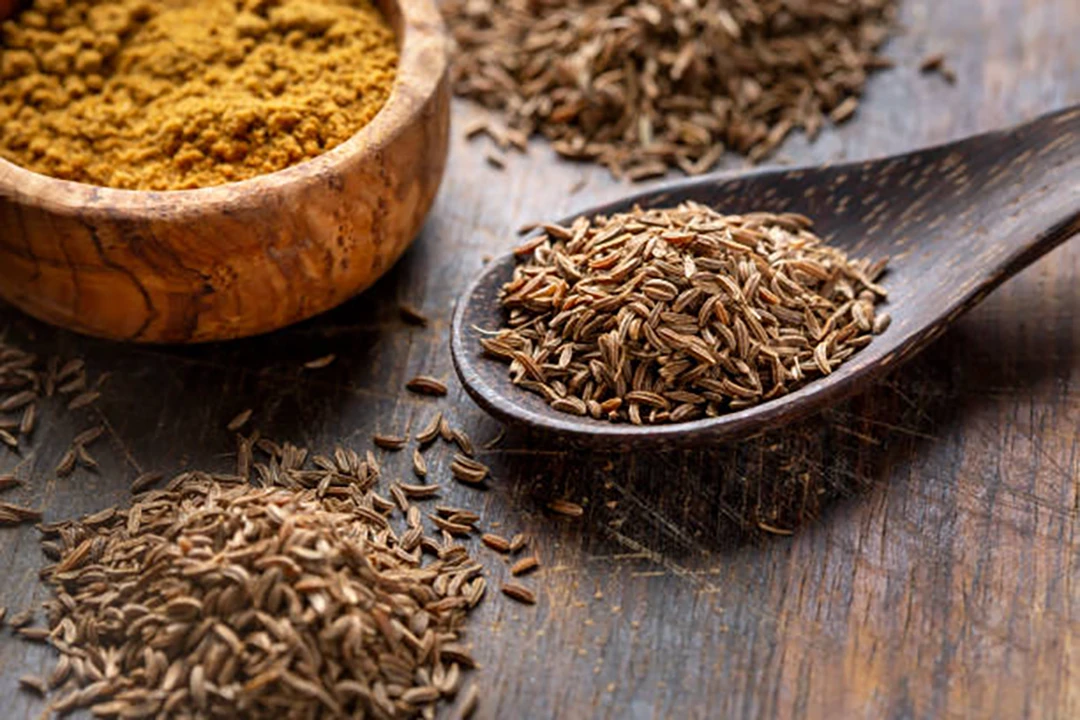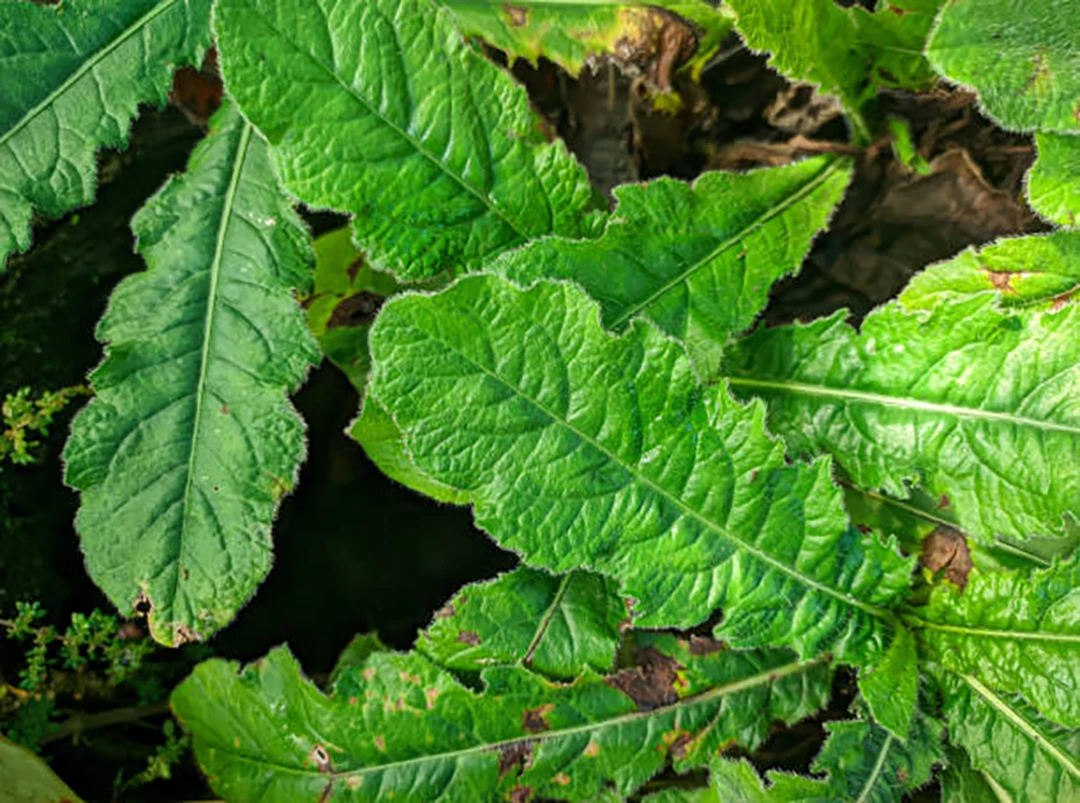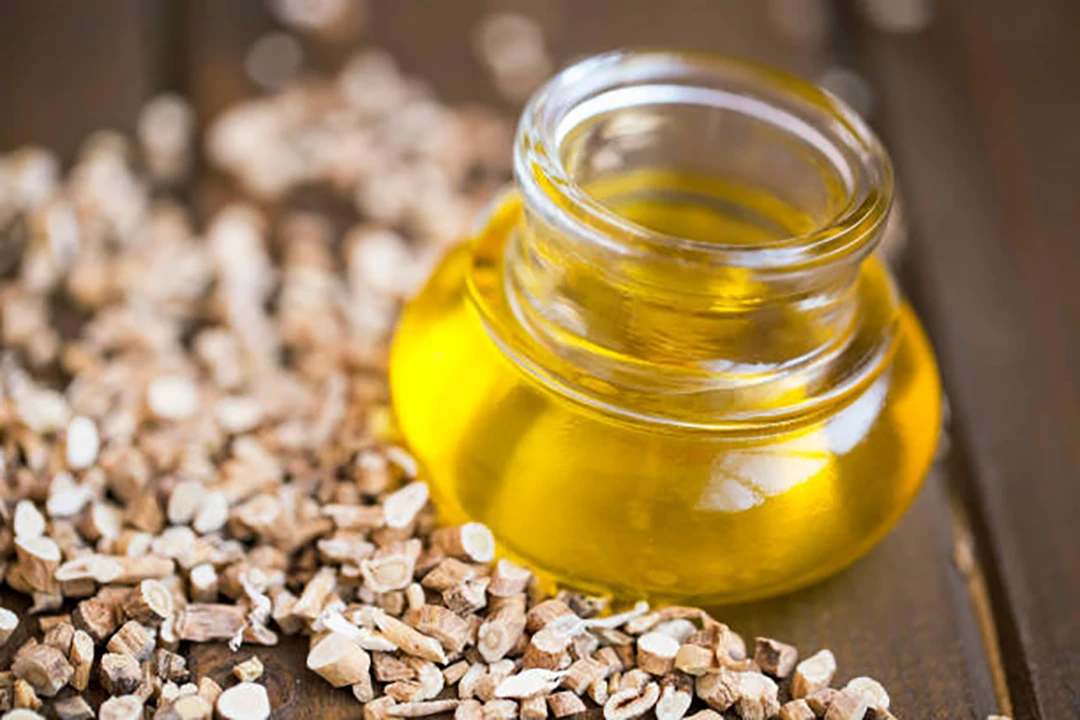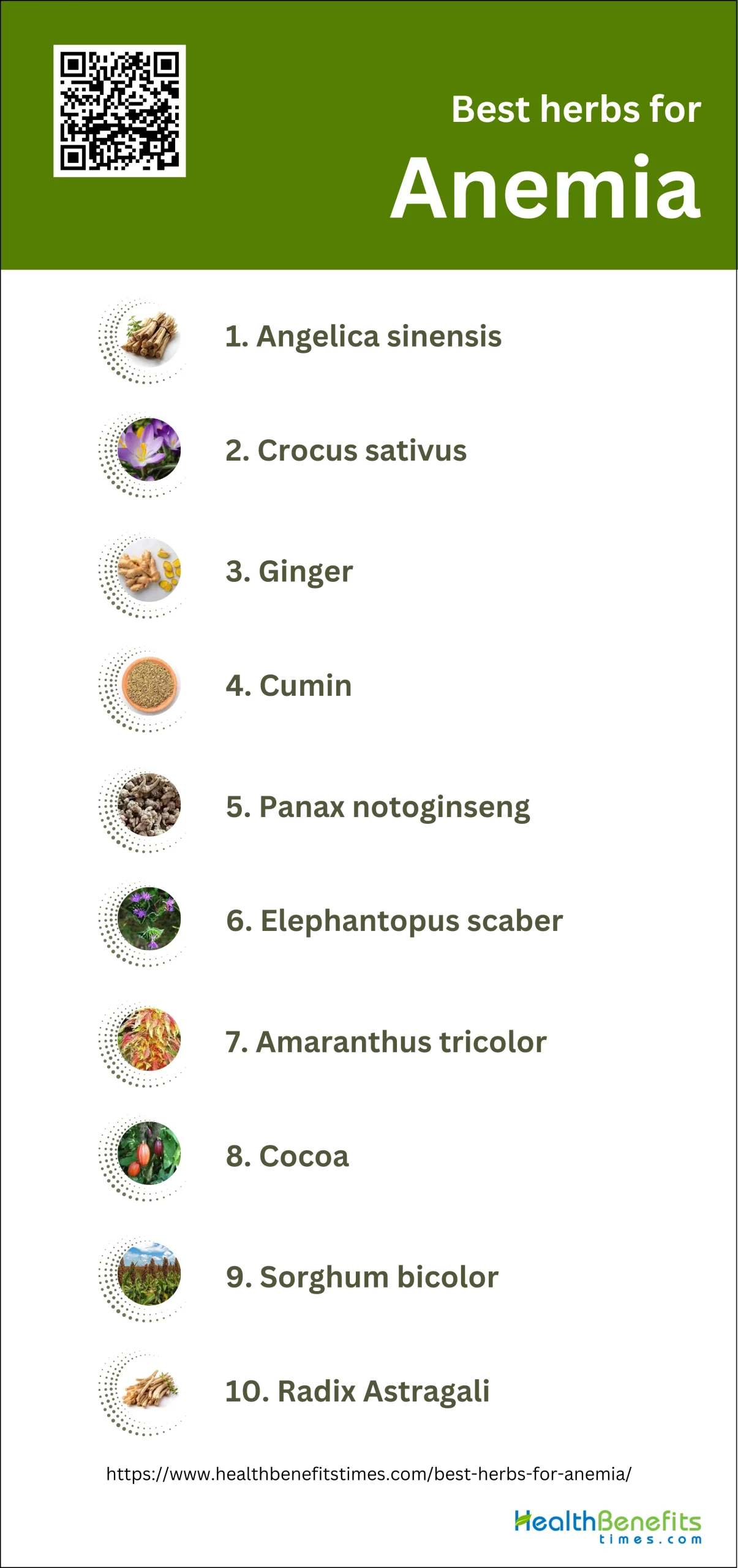 Anemia is a condition characterized by a reduction in the mass of red blood cells or the amount of hemoglobin, leading to decreased oxygen delivery to organs. The World Health Organization (WHO) defines anemia as hemoglobin (Hb) levels below 12.0 g/dL in women and below 13.0 g/dL in men. This definition, however, can vary based on factors such as age, sex, ethnicity, and physiological status. In older adults, anemia is often defined by similar Hb thresholds, but the condition is more prevalent and can be associated with various underlying causes, including nutritional deficiencies, chronic diseases, and unexplained factors. Anemia in the elderly is particularly concerning due to its association with increased morbidity and mortality, cognitive decline, and frailty. The condition is multifactorial and requires a comprehensive diagnostic approach that includes patient history, physical examination, and laboratory tests.
Anemia is a condition characterized by a reduction in the mass of red blood cells or the amount of hemoglobin, leading to decreased oxygen delivery to organs. The World Health Organization (WHO) defines anemia as hemoglobin (Hb) levels below 12.0 g/dL in women and below 13.0 g/dL in men. This definition, however, can vary based on factors such as age, sex, ethnicity, and physiological status. In older adults, anemia is often defined by similar Hb thresholds, but the condition is more prevalent and can be associated with various underlying causes, including nutritional deficiencies, chronic diseases, and unexplained factors. Anemia in the elderly is particularly concerning due to its association with increased morbidity and mortality, cognitive decline, and frailty. The condition is multifactorial and requires a comprehensive diagnostic approach that includes patient history, physical examination, and laboratory tests.
Types of Anemia
While many people think of anemia as a single condition, it actually comes in many forms, each with its own unique causes, symptoms, and treatments. Understanding the different types of anemia can help you recognize symptoms early and seek appropriate care. In this article, we’ll explore the various types of anemia, their distinct characteristics, and what you need to know about each one.
- Iron-deficiency anemia
- Vitamin B12 deficiency anemia (pernicious anemia)
- Folate deficiency anemia
- Aplastic anemia
- Hemolytic anemia
- Sickle cell anemia
- Thalassemia
- Anemia of chronic disease
- Aplastic anemia
- Megaloblastic anemia
- Autoimmune hemolytic anemia
- Blood loss anemia
- Sideroblastic anemia
- Anemia of kidney disease
- Anemia of pregnancy
- Lead poisoning anemia
- Myelodysplastic syndrome anemia
- Anemia from bone marrow diseases
- Hereditary spherocytosis
Common Causes of anemia
While there are many types of anemia, they all share one thing in common: a shortage of red blood cells or hemoglobin. Understanding the root causes of anemia is crucial for both prevention and treatment. In this article, we’ll dive into the most common causes of anemia, shedding light on why they occur and how they can affect your health. From nutritional deficiencies to chronic illnesses, here’s what you need to know about the factors that can lead to anemia.
- Iron deficiency
- Vitamin B12 deficiency
- Folate (folic acid) deficiency
- Chronic diseases (e.g. kidney disease, cancer, rheumatoid arthritis)
- Blood loss (e.g. heavy menstrual periods, gastrointestinal bleeding)
- Pregnancy
- Bone marrow disorders (e.g. aplastic anemia, leukemia, myelodysplastic syndrome)
- Inherited disorders (e.g. sickle cell anemia, thalassemia)
- Autoimmune disorders
- Certain medications
- Poor absorption of nutrients (e.g. due to celiac disease or gastrointestinal surgery)
- Chemotherapy
- Kidney failure
- Chronic inflammation
- Hemolysis (destruction of red blood cells)
Best herbs for Anemia
Using herbs to care for anemia instead of conventional medication offers several advantages, primarily due to the reduced side effects and improved patient compliance. Conventional treatments for anemia, such as iron supplements and blood transfusions, often come with adverse effects like nausea, vomiting, constipation, and stomach pain, which can limit their long-term use. Additionally, oral iron supplements are poorly absorbed in the intestinal tract due to the overexpression of hepcidin, a peptide hormone that regulates iron homeostasis. In contrast, herbal remedies, which have been used in traditional medicine systems such as Persian and Chinese medicine, are generally well-tolerated and have fewer side effects. For instance, Chinese herbal medicine has been shown to reduce the risks of overall and anemia-related mortalities in patients with aplastic anemia. Furthermore, medicinal plants like saffron, ginger, and cumin have demonstrated significant improvements in iron absorption and hemoglobin levels in experimental studies. These natural treatments not only provide a safer alternative but also offer additional health benefits, making them a viable option for managing anemia.
1. Angelica sinensis
Angelica sinensis, commonly known as dong quai or female ginseng, has shown promising potential in addressing anemia, a condition characterized by a deficiency of healthy red blood cells. This herb, widely used in traditional Chinese medicine, contains bioactive compounds that may support blood health and alleviate anemia symptoms. Angelica sinensis is rich in iron, vitamin B12, and folic acid, essential nutrients for red blood cell production and hemoglobin synthesis. Additionally, its active components, such as ferulic acid and polysaccharides, have been found to stimulate hematopoiesis, the process of blood cell formation in the bone marrow.
What Research Says?
- Based on research carried out by Journal of Ethnopharmacology, Angelica sinensis extract significantly increases red blood cell counts, hemoglobin concentrations, and hematocrit levels, thereby improving anemia induced by strenuous exercise.
- As per studies undertaken by Pharmaceutical Biology, Polysaccharides from Angelica sinensis (ASP) enhance hemoglobin and red blood cell counts in lisinopril-induced anemia in rats.
- According to studies performed by Chinese Journal of Integrative Medicine, Angelica sinensis polysaccharide-iron complex (APIC) restores hemoglobin, red blood cell count, and hematocrit to near-normal levels in iron deficiency anemia.
- Research undertaken by BMC Complementary Medicine and Therapies reveals angelica sinensis promotes hematopoiesis and modulates immune responses, which helps in recovering hematopoietic function and reducing immune destruction of bone marrow cells.
- Findings from research done by A C G Publications show administration of Angelica sinensis regulates metabolic pathways and biomarkers associated with anemia, such as linoleic acid metabolism, arginine and proline metabolism, and tryptophan metabolism.
How to Use
Angelica sinensis can be consumed in various forms to potentially support anemia treatment. The most common method is brewing dried root slices into a tea, typically 3-15 grams daily. Alternatively, powdered root capsules or liquid extracts are available, with dosages varying based on concentration. For optimal absorption, it’s often recommended to take Angelica sinensis with vitamin C-rich foods. However, it’s crucial to consult a healthcare professional before using this herb, especially for pregnant women or those on blood-thinning medications.
Potential side effects of Angelica sinensis
Angelica sinensis may cause skin photosensitivity, increasing the risk of sunburn and skin cancer. Some users experience gastrointestinal discomfort, including burping and gas. In rare cases, it can lead to high blood pressure. Prolonged use of high doses may potentially increase cancer risk due to certain chemical compounds present in the herb.
Who should avoid Angelica sinensis
Pregnant women should avoid Angelica sinensis as it may affect uterine muscles and increase the risk of miscarriage. Breastfeeding mothers should also refrain from using it due to insufficient safety data. Individuals with hormone-sensitive conditions like breast, uterine, or ovarian cancers, endometriosis, or uterine fibroids should avoid this herb due to its potential estrogenic effects.
Interaction with medications
Angelica sinensis may interact with blood-thinning medications like warfarin, potentially increasing the risk of bleeding. It may also interact with hormone medications, including estrogens, progesterones, and oral contraceptives. Caution is advised when combining it with other herbs that affect blood clotting, such as ginkgo, garlic, and ginger. Always consult a healthcare provider before use.
2. Crocus sativus

Crocus sativus, commonly known as saffron, has shown potential benefits for individuals with anemia. This vibrant spice contains iron and other essential minerals that support red blood cell production. Saffron’s active compounds, including crocin and safranal, have been found to possess antioxidant properties that may protect red blood cells from oxidative stress and premature destruction. Additionally, some studies suggest that saffron may stimulate the production of erythropoietin, a hormone crucial for red blood cell formation.
What Research Says?
- Findings from research done by the bulletin is the official publication of the National Nutrition Institute show saffron supplementation has been shown to significantly increase serum iron levels, hemoglobin, hematocrit, and ferritin in rats, suggesting its potential to improve iron bioavailability and treat anemia.
- As research performed by Phytomedicine and Oxidative Medicine and Cellular Longevity suggests saffron contains bioactive compounds such as crocin, crocetin, picrocrocin, and safranal, which have demonstrated antioxidant and anti-inflammatory properties. These properties may contribute to its overall health benefits, including the management of anemia.
How to Use
Crocus sativus, or saffron, can be consumed in various ways to potentially support anemia treatment. Saffron tea, made by steeping 10-15 strands in hot water for 10-15 minutes, can be enjoyed 1-2 times daily. Another option is saffron milk, prepared by adding a pinch of saffron to warm milk and consuming it once daily. For a more versatile approach, incorporate saffron into your cooking, using about 1/4 to 1/2 teaspoon in dishes like rice, soups, and sauces.
Potential side effects of Crocus sativus
Excessive consumption of Crocus sativus (saffron) may lead to side effects such as dizziness, drowsiness, and dry mouth. In rare cases, it can cause nausea, vomiting, or allergic reactions. High doses may potentially trigger headaches or changes in appetite. It’s important to note that these side effects are typically associated with consuming amounts far beyond culinary use.
Who should avoid Crocus sativus
Pregnant women should avoid high doses of saffron as it may stimulate uterine contractions and potentially lead to miscarriage. Individuals with bipolar disorder should use caution, as saffron might trigger manic episodes. Those with low blood pressure or bleeding disorders should consult a healthcare provider before using saffron, as it may exacerbate these conditions.
Interaction with medications
Saffron may interact with blood-thinning medications like warfarin, potentially increasing the risk of bleeding. It might also interact with antidepressants, particularly selective serotonin reuptake inhibitors (SSRIs), potentially leading to serotonin syndrome. Individuals taking medications for high blood pressure should use caution, as saffron may enhance their effects. Always consult a healthcare professional before combining saffron with medications.
3. Ginger
Ginger, a popular spice and medicinal herb, offers potential benefits for individuals with anemia. This root contains compounds that may support blood health and alleviate anemia symptoms. Ginger is rich in iron and other minerals that are essential for red blood cell production. Its active components, such as gingerols and shogaols, possess anti-inflammatory and antioxidant properties that can protect red blood cells from oxidative stress and premature destruction. Additionally, ginger may enhance iron absorption in the body, which is crucial for addressing iron-deficiency anemia. Some studies suggest that ginger can stimulate the production of hemoglobin and improve blood circulation, further supporting overall blood health.
What Research Says?
- Research completed by Molecules and The bulletin is the official publication of the National Nutrition Institute indicates Ginger supplementation has been shown to enhance iron absorption, increase serum iron levels, and improve hematological parameters such as hemoglobin, hematocrit, and ferritin levels in both animal and human studies.
- According to investigations conducted by Journal of Nutrition & Intermediary Metabolism, Ginger has been found to increase red blood cell counts and hemoglobin levels in smokers, suggesting its potential benefit in treating anemia in this population.
How to Use
To incorporate ginger for potential anemia benefits, try brewing fresh ginger tea by steeping 1-2 slices in hot water for 10 minutes, enjoying it 1-3 times daily. Alternatively, add grated ginger to smoothies, soups, or stir-fries. For a convenient option, ginger supplements are available as capsules or powders, typically dosed at 1-3 grams daily. To enhance iron absorption, pair ginger with vitamin C-rich foods. Always start with small amounts and gradually increase to assess tolerance and effectiveness.
Potential side effects of Ginger
While generally safe, excessive ginger consumption may lead to mild side effects such as heartburn, gas, or bloating. Some individuals might experience mouth or throat irritation. In rare cases, high doses can cause diarrhea or stomach discomfort. Topical use of ginger may occasionally result in skin irritation. These side effects are typically associated with consuming large amounts beyond normal dietary intake.
Who should avoid Ginger
Individuals with bleeding disorders should use ginger cautiously, as it may increase bleeding risk. Pregnant women, especially those close to labor or with a history of miscarriage, should consult a healthcare provider before using ginger supplements. People with gallstone disease should avoid ginger, as it may increase bile production. Those with low blood pressure should use ginger carefully, as it may lower blood pressure further.
Interaction with medications
Ginger may interact with blood-thinning medications like warfarin, potentially increasing bleeding risk. It can also interact with diabetes medications, possibly enhancing their effects and leading to low blood sugar. Ginger might interfere with certain heart medications and calcium channel blockers. Always consult a healthcare professional before combining ginger supplements with prescription medications, especially those affecting blood clotting or blood pressure.
4. Cumin

Cumin, a popular spice used in many cuisines, offers potential benefits for individuals with anemia. This aromatic seed is rich in iron, a crucial mineral for red blood cell production and oxygen transport in the body. Cumin also contains other essential nutrients like copper and manganese, which play important roles in iron absorption and utilization. The antioxidants present in cumin, such as flavonoids and phenolic compounds, may help protect red blood cells from oxidative stress and premature destruction. Additionally, cumin has been found to enhance digestion and nutrient absorption, which can indirectly support overall blood health.
What Research Says?
- Research efforts by The bulletin is the official publication of the National Nutrition Institute show that Cumin has been shown to increase hemoglobin levels in experimental animals, suggesting its potential as a treatment for anemia.
How to Use
To incorporate cumin for potential anemia benefits, add ground cumin to soups, stews, and curries, using 1/2 to 1 teaspoon per serving. Cumin tea can be prepared by steeping 1 teaspoon of cumin seeds in hot water for 5-10 minutes, consumed once or twice daily. For a quick boost, mix 1/4 teaspoon of cumin powder with honey or add it to smoothies. Roasted cumin seeds can be sprinkled on salads or yogurt. Pair cumin with vitamin C-rich foods to enhance iron absorption.
Potential side effects of Cumin
While generally safe in culinary amounts, excessive cumin consumption may cause digestive discomfort, including heartburn, gas, or bloating. In rare cases, it might trigger allergic reactions, particularly in individuals sensitive to plants in the parsley family. Some people may experience skin irritation or rashes when applying cumin topically. These side effects are typically associated with consuming large quantities beyond normal dietary intake.
Who should avoid Cumin
Pregnant women should use cumin cautiously, as large amounts may stimulate uterine contractions. Individuals with low blood sugar should monitor their levels closely when consuming cumin, as it may have a mild blood sugar-lowering effect. Those with bleeding disorders or scheduled for surgery should consult a healthcare provider before using cumin supplements, as it may increase bleeding risk.
Interaction with medications
Cumin may interact with medications that lower blood sugar, potentially enhancing their effects. It might also interact with blood-thinning medications, increasing the risk of bleeding. Cumin could interfere with the absorption of certain medications when taken simultaneously. Always consult a healthcare professional before combining cumin supplements with prescription medications, especially those affecting blood clotting or blood sugar levels.
5. Panax notoginseng
Panax notoginseng, also known as Sanchi ginseng, has shown promising potential in addressing anemia and improving blood health. Studies suggest that this herb may attenuate anemia in mice with blood deficiency, indicating its potential benefits for humans with similar conditions. The saponins found in Panax notoginseng leaves have been observed to improve symptoms of anemia, possibly by supporting red blood cell production and enhancing iron absorption. Research has also explored the effects of Panax notoginseng saponins on the proliferation and differentiation of blood cells, which could contribute to its anemia-fighting properties. Additionally, Panax notoginseng is sometimes used in traditional Chinese medicine for treating aplastic anemia, a more severe form of the condition.
What Research Says?
- As demonstrated by research from Frontiers in Pharmacology, Steamed Panax notoginseng (SPN) significantly increases the number of peripheral blood cells and hematopoietic factors in bone marrow, promoting hematopoiesis through the JAK-STAT pathway.
- Research initiated by Frontiers in Pharmacology suggests SPN’s active constituents, such as Rk3 and 20(S)-Rg3, are closely associated with its hematinic effect, enhancing blood parameters and heme levels in mice with blood deficiency syndrome.
- According to the research carried out by Biomedicine & Pharmacotherapy, Panax notoginseng saponins (PNS) from leaves promote the proliferation of hematopoietic stem/progenitor cells, improving hematopoiesis in aplastic anemia models.
- Studies conducted by The Journal of Internal Korean Medicine indicate Samchilgeun powder (Panax notoginseng) has been observed to treat hematuria effectively without exacerbating anemia in patients requiring double antiplatelet therapy, suggesting its potential safety and efficacy in clinical settings.
How to Use
To consume Panax notoginseng for potential anemia benefits, prepare a tea by steeping 1-2 grams of dried root powder in hot water for 5-10 minutes, drinking it once or twice daily. Alternatively, take 500-1000mg of standardized extract capsules twice daily with meals. Liquid extracts can be used as directed, typically 1-2 ml per day. For enhanced absorption, consider pairing with vitamin C-rich foods. Start with lower doses and gradually increase as tolerated. Always consult a healthcare professional before beginning any new supplement regimen for anemia.
Potential side effects of Panax notoginseng
While generally well-tolerated, Panax notoginseng may cause side effects in some individuals. These can include dry mouth, flushed skin, insomnia, nausea, and rash. In rare cases, it might lead to gastrointestinal discomfort or allergic reactions. Excessive consumption may potentially increase the risk of bleeding due to its anticoagulant properties. It’s important to use Panax notoginseng under professional guidance to minimize adverse effects.
Who should avoid Panax notoginseng
Pregnant and breastfeeding women should avoid Panax notoginseng due to potential risks to fetal development and insufficient safety data. Individuals with hormone-sensitive conditions like breast, uterine, or ovarian cancers should exercise caution due to its possible estrogenic effects. Those with bleeding disorders or scheduled for surgery should consult a healthcare provider before use, as it may increase bleeding risk. People with low blood pressure should also use it cautiously.
Interaction with medications
Panax notoginseng may interact with various medications, potentially altering their effectiveness or increasing side effects. It can enhance the effects of blood-thinning medications like warfarin, increasing bleeding risk. It may interact with diabetes medications, potentially leading to hypoglycemia. Panax notoginseng might also affect the absorption and metabolism of certain drugs, including some antibiotics and anticancer agents. Always consult a healthcare professional before combining Panax notoginseng with any medications.
6. Elephantopus scaber

Elephantopus scaber, also known as elephant’s foot or prickly leaves, is a medicinal herb that has been traditionally used in various cultures for its potential health benefits, including its possible effects on anemia. While scientific research on its specific benefits for anemia is limited, this plant contains several compounds that may support blood health. Elephantopus scaber is rich in iron, a crucial mineral for red blood cell production and oxygen transport in the body. Additionally, it contains other nutrients like vitamin C, which can enhance iron absorption. Some traditional medicine practices have used this herb to improve blood circulation and boost overall vitality, which could indirectly support those with anemia.
What Research Says?
- Research executed by Biodiversitas Journal of Biological Diversity reveals Herbs containing Elephantopus scaber, along with Curcuma xanthorrhiza and Amaranthus tricolor, significantly improved the quality of life (QOL) in patients with Iron Deficiency Anemia (IDA) after 4 weeks of intervention.
- As shown by research done by Journal of Ethnopharmacology, Elephantopus scaber has potent anti-inflammatory effects by inhibiting NF-κB p65-DNA binding activity in LPS-activated macrophages, which may contribute to its overall health benefits.
How to Use
To consume Elephantopus scaber for potential anemia benefits, prepare a tea by steeping 1-2 teaspoons of dried leaves in hot water for 5-10 minutes, drinking it 1-2 times daily. Alternatively, take 500-1000mg of standardized extract capsules twice daily with meals. For a traditional approach, cook 5-10 grams of fresh leaves in soups or stews. To enhance iron absorption, consider pairing with vitamin C-rich foods. Start with lower doses and gradually increase as tolerated. Always consult a healthcare professional before beginning any new herbal regimen for anemia treatment.
Potential side effects of Elephantopus scaber
While generally considered safe, Elephantopus scaber may cause mild side effects in some individuals. These can include gastrointestinal discomfort, such as nausea or stomach upset. In rare cases, allergic reactions may occur, particularly in people sensitive to plants in the Asteraceae family. Excessive consumption might lead to dry mouth, dizziness, or skin irritation. As with any herbal remedy, it’s important to use Elephantopus scaber under professional guidance to minimize adverse effects.
Who should avoid Elephantopus scaber
Pregnant and breastfeeding women should avoid Elephantopus scaber due to insufficient safety data and potential risks to fetal development. Individuals with bleeding disorders or scheduled for surgery should consult a healthcare provider before use, as it may increase bleeding risk. Those with hormone-sensitive conditions like breast, uterine, or ovarian cancers should exercise caution due to its possible estrogenic effects. People with known allergies to plants in the Asteraceae family should also avoid this herb.
Interaction with medications
Elephantopus scaber may interact with various medications, potentially altering their effectiveness or increasing side effects. It might enhance the effects of blood-thinning medications like warfarin, increasing bleeding risk. The herb could interact with diabetes medications, potentially leading to hypoglycemia. It may also affect the absorption and metabolism of certain drugs, including some antibiotics and anticancer agents. Always consult a healthcare professional before combining Elephantopus scaber with any medications, especially those affecting blood clotting or blood sugar levels.
7. Amaranthus tricolor
Amaranthus tricolor, also known as Chinese spinach or Joseph’s coat, is a nutritious leafy vegetable that may offer potential benefits for individuals with anemia. This plant is rich in iron, a crucial mineral for red blood cell production and oxygen transport in the body. Amaranthus tricolor also contains other essential nutrients like folate, vitamin C, and vitamin A, which support overall blood health and enhance iron absorption. The high protein content of this vegetable may contribute to improved hemoglobin synthesis. While specific scientific studies on Amaranthus tricolor’s direct effects on anemia are limited, its nutrient profile suggests it could be a valuable addition to an anemia-fighting diet.
What Research Says?
- Research organized by Research.Publish.Connect. suggests Consumption of Amaranthus tricolor juice significantly increased hemoglobin levels in female workers, suggesting its effectiveness in combating iron deficiency anemia.
- Findings from studies performed by Research Square indicate Supplementation with Amaranthus tricolor leaf powder in diversified meals showed a significant increase in hemoglobin concentrations among Adivasi children, indicating its potential in preventing and treating anemia.
- Research performed by Biodiversitas Journal of Biological Diversity shows a study comparing herbs containing Amaranthus tricolor with iron supplements found that while the herbs did not significantly affect hemoglobin or other iron parameters, they did improve the quality of life in iron deficiency anemia patients.
How to Use
To incorporate Amaranthus tricolor for potential anemia benefits, add fresh leaves to salads, using about 1-2 cups per serving. Alternatively, lightly sauté or steam 1-2 cups of leaves as a side dish, preserving nutrients. Include chopped Amaranthus tricolor in soups, stews, or stir-fries, using 1/2 to 1 cup per portion. For a nutrient-dense smoothie, blend 1 cup of leaves with fruits and yogurt. Consume these preparations 2-3 times weekly. Pair with vitamin C-rich foods to enhance iron absorption. Always wash leaves thoroughly before consumption.
Potential side effects of Amaranthus tricolor
While generally considered safe, excessive consumption of Amaranthus tricolor may cause mild gastrointestinal discomfort, including nausea, stomach upset, or diarrhea. Some individuals may experience allergic reactions, particularly those sensitive to plants in the Amaranthaceae family. In rare cases, it might lead to skin irritation or rashes when applied topically. As with any herb, it’s important to use Amaranthus tricolor in moderation and under professional guidance.
Who should avoid Amaranthus tricolor
Pregnant and breastfeeding women should avoid Amaranthus tricolor due to insufficient safety data and potential risks to fetal development. Individuals with known allergies to plants in the Amaranthaceae family should exercise caution. Those with kidney problems should consult a healthcare provider before consumption, as Amaranthus tricolor contains oxalates. People with low blood pressure should use it cautiously, as it may have a mild hypotensive effect.
Interaction with medications
Amaranthus tricolor may interact with certain medications, potentially altering their effectiveness. It might enhance the effects of blood-thinning medications, increasing the risk of bleeding. The plant could interact with diabetes medications, potentially leading to hypoglycemia. It may also affect the absorption and metabolism of certain drugs, including some antibiotics and antihypertensive medications. Always consult a healthcare professional before combining Amaranthus tricolor with any medications.
8. Cocoa

Cocoa may offer potential benefits for individuals with anemia due to its rich nutritional profile. While specific research on cocoa’s direct effects on anemia is limited, this popular food contains several nutrients that support blood health. Cocoa is a good source of iron, a crucial mineral for red blood cell production and oxygen transport in the body. It also contains copper, which plays a role in iron absorption and utilization. Additionally, cocoa is rich in flavonoids, particularly epicatechin, which have antioxidant properties that may help protect red blood cells from oxidative stress. The presence of magnesium in cocoa may also contribute to overall blood health.
What Research Says?
- According to the findings from research conducted by Nuts and Seeds in Health and Disease Prevention, Cocoa has been used historically to treat anemia, among other conditions such as mental fatigue, tuberculosis, and kidney stones.
- Studies executed by The Journal of Nutritional Biochemistry indicate Cocoa supplementation has been shown to reduce inflammation in adipose tissue by decreasing levels of inflammatory markers such as tumor necrosis factor-α and interleukin-6.
How to Use
To incorporate cocoa for potential anemia benefits, consume 1-2 tablespoons of unsweetened cocoa powder daily. Mix it into warm milk or plant-based alternatives for a nutrient-rich drink. Add cocoa to smoothies, oatmeal, or yogurt for a nutritious boost. For a savory option, use cocoa in chili or mole sauce recipes. Choose dark chocolate with at least 70% cocoa content, enjoying 1-2 small squares daily. Pair cocoa consumption with vitamin C-rich foods to enhance iron absorption. Always opt for unsweetened varieties to avoid excess sugar intake.
Potential side effects of Cocoa
While generally safe in moderate amounts, excessive cocoa consumption may lead to side effects. These can include caffeine-related symptoms such as increased heart rate, insomnia, or anxiety. Some individuals may experience digestive issues like nausea or stomach upset. High intake of cocoa products, especially those with added sugar, can contribute to weight gain and dental problems. In rare cases, cocoa may trigger allergic reactions in sensitive individuals.
Who should avoid Cocoa
Individuals with caffeine sensitivity should limit cocoa intake due to its caffeine content. Those with gastroesophageal reflux disease (GERD) may experience worsened symptoms and should consume cocoa cautiously. People with migraine headaches might find cocoa triggers their symptoms. Individuals with kidney stones should consult a healthcare provider before consuming cocoa regularly, as it contains oxalates. Those with chocolate allergies should avoid cocoa entirely.
Interaction with medications
Cocoa may interact with certain medications, potentially altering their effectiveness. It can enhance the effects of stimulant drugs due to its caffeine content. Cocoa might interfere with the absorption of some antibiotics and osteoporosis medications. It may also interact with blood thinners, potentially increasing the risk of bleeding. Always consult a healthcare professional before consuming significant amounts of cocoa while on medication, especially those affecting heart rate or blood clotting.
9. Sorghum bicolor
Sorghum bicolor, commonly known as sorghum, is a nutrient-rich grain that may offer potential benefits for individuals with anemia. This cereal grain is an excellent source of iron, a crucial mineral for red blood cell production and oxygen transport in the body. Sorghum also contains other essential nutrients that support blood health, including copper, magnesium, and B vitamins like folate and vitamin B6. The high protein content of sorghum may contribute to improved hemoglobin synthesis. Additionally, sorghum is rich in antioxidants, particularly phenolic compounds and tannins, which may help protect red blood cells from oxidative stress and premature destruction. Some studies have suggested that sorghum consumption may increase hemoglobin levels and improve overall iron status.
What Research Says?
- Research work done by Nutrition suggests Sorghum bicolor extract significantly increases hemoglobin concentration, red blood cell count, and hematocrit levels in patients with preoperative anemia.
- As evidenced by research led by Journal of Ethnopharmacology, Administration of aqueous extract of Sorghum bicolor stem bark in iron-deficient rats resulted in a significant increase in hemoglobin, packed cell volume, and red blood cells.
- Research undertaken by International Journal of Innovative Science and Research Technology, shows the extract was beneficial in boosting blood volume and presented an alternative to high-cost management of nutritional anemia.
How to Use
To incorporate Sorghum bicolor for potential anemia benefits, use sorghum flour in baking, replacing 25-50% of wheat flour in recipes. Cook whole sorghum grains like rice, using 1/4 to 1/2 cup per serving as a side dish. Add cooked sorghum to salads, soups, or stews for added nutrition. Prepare sorghum porridge for breakfast, using 1/4 cup of grains. For a nutritious drink, blend cooked sorghum with fruits and milk. Consume these preparations 2-3 times weekly. Pair with vitamin C-rich foods to enhance iron absorption.
Potential side effects of Sorghum bicolor
While generally considered safe when consumed as food, excessive intake of Sorghum bicolor may cause mild side effects in some individuals. These can include digestive discomfort, such as bloating, gas, or stomach upset. In rare cases, allergic reactions may occur, particularly in people sensitive to grasses. Some individuals might experience headaches or dizziness. As with any dietary supplement, it’s important to use Sorghum bicolor under professional guidance to minimize adverse effects.
Who should avoid Sorghum bicolor
Pregnant and breastfeeding women should avoid Sorghum bicolor supplements due to insufficient safety data. Individuals with grass allergies or celiac disease should exercise caution, as Sorghum bicolor may trigger allergic reactions or gluten-like responses in sensitive individuals. Those with digestive disorders or compromised immune systems should consult a healthcare provider before consuming Sorghum bicolor. People scheduled for surgery should discontinue use at least two weeks prior, as it may affect blood sugar levels.
Interaction with medications
Sorghum bicolor may interact with certain medications, potentially altering their effectiveness. It might enhance the effects of blood sugar-lowering medications, increasing the risk of hypoglycemia. Sorghum bicolor could interact with drugs affecting the immune system or hormone levels. It may also interfere with the absorption of some minerals and medications. Always consult a healthcare professional before combining Sorghum bicolor with any medications, especially those for diabetes, thyroid disorders, or autoimmune conditions.
10. Radix Astragali

Radix Astragali, also known as Astragalus root, offers promising benefits for individuals with anemia. This traditional Chinese herb is recognized for its potential to improve blood health and combat anemia through multiple mechanisms. Radix Astragali has been found to enhance erythropoiesis, the process of red blood cell production, which is crucial for addressing anemia. Additionally, it may improve iron metabolism, helping the body utilize iron more effectively for hemoglobin synthesis. The adaptogenic properties of Radix Astragali contribute to supporting the overall immune system, which is particularly beneficial for those suffering from anemia, as a weakened immune system can sometimes be both a cause and a consequence of the condition.
What Research Says?
- According to studies led by FEBS Open Bio, Radix Astragali, alone or in combination with other herbs, has been shown to improve levels of red blood cells, white blood cells, hemoglobin, and hematocrit in anemic conditions.
- Research carried out by Journal of Medicinal Food indicates treatment with Radix Astragali enhances erythropoietin gene expression, which is crucial for red blood cell production, in cyclophosphamide-induced anemic rats.
- Based on research carried out by BMC Complementary Medicine and Therapies, the combination of Radix Astragali with Radix Angelicae Sinensis shows superior effects in improving hematological parameters and restoring hematopoietic function compared to each herb alone.
How to Use
To consume Radix Astragali for potential anemia benefits, prepare a tea by simmering 3-6 grams of dried root slices in water for 15-20 minutes, drinking it once or twice daily. Alternatively, take 500-1000mg of standardized extract capsules twice daily with meals. Powdered root can be added to soups or broths, using 1-2 teaspoons per serving. Tinctures are also available, typically dosed at 2-4 ml three times daily. For enhanced absorption, consider pairing with vitamin C-rich foods. Always consult a healthcare professional before starting any new herbal regimen.
Potential side effects of Radix Astragali
While generally well-tolerated, Radix Astragali may cause mild side effects in some individuals. These can include rash, itching, nasal symptoms, stomach discomfort, nausea, and diarrhea. In rare cases, it might lead to allergic reactions. A case report noted increased carbohydrate antigen 19-9 and reversible liver and kidney cysts with daily consumption. As with any herbal supplement, it’s important to use Radix Astragali under professional guidance to minimize adverse effects.
Who should avoid Radix Astragali
Pregnant and breastfeeding women should avoid Radix Astragali due to insufficient safety data and potential risks to fetal development. Individuals with autoimmune diseases like lupus, rheumatoid arthritis, or multiple sclerosis should exercise caution, as Radix Astragali may stimulate the immune system. Those with low blood pressure should use it cautiously, as it may further lower blood pressure. People scheduled for surgery should discontinue use at least two weeks prior, as it may affect blood sugar levels.
Interaction with medications
Radix Astragali may interact with various medications, potentially altering their effectiveness. It might enhance the effects of immunosuppressant drugs, antiviral medications, and drugs that lower blood sugar or blood pressure. Radix Astragali could also interact with blood-thinning medications, increasing the risk of bleeding. It may affect the absorption and metabolism of certain drugs, including some antibiotics and anticancer agents. Always consult a healthcare professional before combining Radix Astragali with any medications.
FAQs
- What are the signs and symptoms of anemia?
While the article discusses types and causes of anemia, it doesn’t provide a comprehensive list of symptoms. Common signs and symptoms include fatigue, weakness, pale or yellowish skin, irregular heartbeats, shortness of breath, dizziness, chest pain, cold hands and feet, headaches, and cognitive issues.
- How is anemia diagnosed?
The article does not detail how anemia is diagnosed. Anemia is typically diagnosed through a complete blood count (CBC) test, which measures levels of red blood cells, hemoglobin, and hematocrit. Additional tests may be performed to determine the underlying cause of anemia, such as iron studies, vitamin B12, and folate levels.
- Can diet alone cure anemia, or are supplements necessary?
While the article mentions herbs and natural treatments, it does not address whether dietary changes alone can cure anemia or if supplements or medications are also necessary. The answer varies based on the type and severity of anemia. For mild anemia caused by nutrient deficiencies, diet adjustments and supplementation may be sufficient, but more severe cases might require medications or medical procedures.
- Are there any lifestyle changes that can help manage or prevent anemia?
The article discusses herbs but does not cover lifestyle changes. Preventive measures and management strategies include a balanced diet rich in iron, B vitamins, and folic acid; regular physical activity to stimulate red blood cell production; managing chronic conditions that may contribute to anemia; and avoiding substances like alcohol or tobacco that can impact blood health.
- How long does it take for anemia to improve with herbal remedies?
The article discusses various herbs but does not specify the timeline for improvement. The time it takes to see results from herbal treatments can vary widely depending on the type and severity of anemia, the specific herbs used, and individual health factors. It may take several weeks to months to notice significant improvements.
- Are herbal treatments for anemia safe for children or the elderly?
The article does not specifically address the safety of herbal treatments for different age groups. Some herbs may not be safe for children or older adults due to their specific health needs and the risk of adverse effects or interactions with other medications. It’s essential to consult a healthcare professional before using herbal treatments in these populations.
- Can anemia cause long-term complications if left untreated?
While the article discusses the types and causes of anemia, it does not address the potential long-term complications. Untreated anemia can lead to severe health problems, including heart disease, severe fatigue, pregnancy complications, developmental delays in children, and decreased immune function.
- What role does hydration play in managing anemia?
The article does not mention hydration. Proper hydration is essential for overall health and can help maintain blood volume, which is crucial in managing anemia. Dehydration can exacerbate symptoms like fatigue and dizziness.
- Are there any herbs to avoid if I have a specific type of anemia?
While the article lists herbs beneficial for anemia, it does not specify if certain herbs should be avoided based on the type of anemia. For example, some herbs might not be suitable for hemolytic anemia due to their potential to increase oxidative stress.
- What is the role of genetic testing in diagnosing anemia?
The article does not mention genetic testing. Genetic testing may be recommended to diagnose specific types of anemia, such as sickle cell anemia, thalassemia, or hereditary spherocytosis, especially when there is a family history of the condition.


